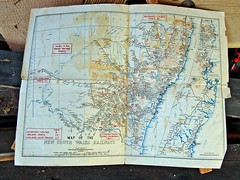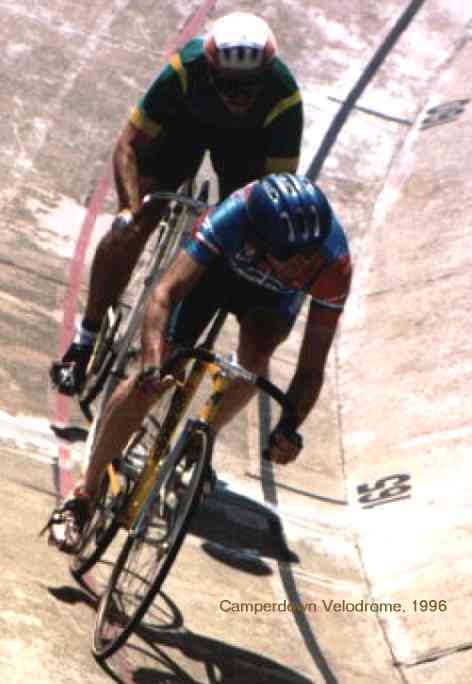OK, ultimately this is all about security, privacy and copyright - those
dogged old fashioned concepts from last century. In essence we are perhaps
just a few technological steps away from a complete and utter loss of our
physical control over images, sounds, thoughts and ideas. Physical
manifestations of science, art, craft or thought have up to recently
provided a reliable means by which we can control - and often profit by -
our creativity. However the digital world has steadily chipped away at the
necessity for a physical presence for our art. Recorded music, like words
and images, is now transmissable without regard for - or containment on - a
discrete physical object. And whilst we still "need" an object to "play"
the art on, the cost and size of that object is diminishing as rapidly as
our disregard for copyright. Increasingly we have to wield a big stick to
protect from theft things which don't naturally feel "stealable". When you
can do it so easily, quickly and simply, without leaving home and without
taking someone else's physical "property", it no longer feels "wrong". It's
just a soft copy, after all.
Now we can all see good and bad in this, and we can all see that there's a
growing mismatch between the virtual and "real" worlds. And as
copyright-owners we could fight against copyright "theft" whilst feeling
"right" about our position, needing to eat and pay for housing as we do.
But what about tomorrow? What if the physical barriers continue to erode?
What if convergence, connectivity and miniaturisation lead us to a state
where everything is captured, remembered and shared, just by default?
I recently commented on the rise of a global human connectedness via a
convergence of our mobile devices, the internet and embedded image
capturing devices. In essence this is something new for geographically
dispersed humanity - that we can be somewhere, almost anywhere on the
planet, have a thought or experience - good or bad - and share it globally
as voice, text or image. Or as any form of data, really. That mass human
connectedness may (to cite a few possibilities) breakdown social, political
and economic barriers; subject our leaders and authority figures to a new
level of poular critique; or create a 'Lithium state' where the banal and
the merely average will rule. (Daily Telegraph readers will recognise that
state.) I'm sure there are many more options here and I certainly don't
know all of the possible outcomes. I'll leave you to think of some more.
What I would like to do now is throw another thought into the mix - that we
are entering a new, powerful era of connected common - as in shared -
memory. Memory that doesn't get forgotten, doesn't go away and doesn't take
much effort to retrieve. I would go so far as to suggest that the
combination of stored thoughts, expressions and experiences with our
aforementioned mass connectedness will lead to a new type of shared
(perhaps 'pseudo' or 'meta'?) human consciousness. Simply, a
hyper-awareness of a larger "self" beyond our own narrow vision. Hmm,
that's not so simple either, is it? It may not even be desirable. Not that
we will have any choice, it will just arrive. The rock, having been pushed,
is rolling downhill.
So just how does this pseudo-hyper-meta human consciousness come about?
Just work backwards with me for a moment. Think 'pre-book'. Human written
language existed prior to the book of course, but there was an explosion of
thought - and of the communication of thoughts - that came about because of
the sheer (relative) ease with which thoughts, ideas and explanations could
be stored on a physical page and accurately communicated across distances.
If you like, imagine yourself further back in time, before there was a
written language. We may have etched the odd number on a tablet for
accounting (or taxation) purposes but we had no way to write down what we
thought, or to document a simple 'how-to'. We could talk about it, of
course, and pass it on - but error (good or bad) was inevitable (as shown
by the well-known "Chinese whispers" exercise). Of course we had ways and
means to minimise those errors, memory aids if you like, but essentially we
had to learn a narrative by rote before we could pass it on, Illiad-syle.
And if your verbal language skills weren't too flash then you relied on
others to do the job, and to intepret what was meant. So it was inevitably
filtered, distorted and controlled information. Now come back to this
century and look at how we are changing our world, step-by-step. Firstly,
we are generally better educated and by and large can read and write. We
can just about all read - perhaps even write - entire books, if we so
choose. (And apologies to those who can't, who may have a disability by
birth or circumstance, or live in a situation where basic education isn't a
given.) Now layer on top of that the connectedness we have achieved
already, the mobility and the access to data. We can use that connectedness
for any purpose, of course, but what I wish to explore is the prospect of
accurate hyper-access to a vastly increased scope of information. Never
before in human history have we been able to access our "written" (or
saved, if you like) word, our accumulated wealth of knowledge, so readily,
so easily, wherever we may be. That alone will accelerate human
technological - and possibly social - development. We have stepped well
outside of our genome and into a wider phenotypical world of extended
ability and influence.
OK, that's all a given, isn't it? Big deal. But step forward to a brave new
world where every step we take is recorded in sound and vision. Where our
entire lives (possibly excepting - possibly - personal moments of our
choosing) are recorded and stored for later analysis. Our patterns of
behaviour, our thoughts, our art, our expression - kept for good. Not
filtered, enhanced and written down in a book but simply recorded,
unchanged, and made available upon request. Whilst much of our lives will
presumably be subject to some restriction and made "offlimits" to wider
analysis, our public steps will be broadly available. Our work, our
hobbies, our inventions, our preferences, our habits, our perspectives -
all observed and recorded. We see this trend already reflected in the
growth of stored knowledge and meta-data on the World Wide Web. We see the
possibilities that come about with crowd-sourcing, effectively putting the
masses to work, with or without pay, Wiki-style. We see the social media
revolution, capturing our lives bit-by-bit. We see GPS and camera
technology embedded in laptops, cell phones and bike hemets. We see the
cloud, convergence and miniaturisation. Add it all up. Everything connects
and converges into smaller, shared devices that we quite literally wear, or
at least carry around. That's just a step or 2 away from bio-embedded
technology and constant, pervasive data capture.
It used to be that security-conscious bodies (especially large corporates
and defence establishments) simply banned cameras and cell phones from
their premises. But cell phones became a business necessity, so they had to
come in. And now it's difficult to buy a cell phone without a camera, so
they are in too, even if by stealth. But what happens when we ourselves
save all of our vision, all our audio - all of what we do - to local
electronic memory, or to cloud, with every step we take? It may sound
slightly weird, but it becomes less strange with every generation of
ever-more-powerful personal memory device. As our converged, location-aware
smart-camera-phone shrinks to watch-size, or becomes simply part of your
sunglasses frame, so it becomes expected. Why not converge all devices onto
contact lenses? Why not simply embed in our bodies a chip that transmits
and receives signals from sensors anywhere in or on our body? And make that
data available to others?
Some of this will just happen. Some products will be outlawed. But this
converged connectedness will happen to a greater rather than lesser degree;
it may lead to a new meta-conscious state where ideas are shared
exponentially, and it may provoke a security and privacy backlash. Indeed
perfect, highly retrievable and super-communicated memory will certainly
test our copyright laws. If you can hear or look at it, it's copied to the
cloud, immediately. Some people will chose not to transmit, but many more
will like to share. How will Rupert Murdoch put a wall around that?
Posted via email from gtveloce's posterous















